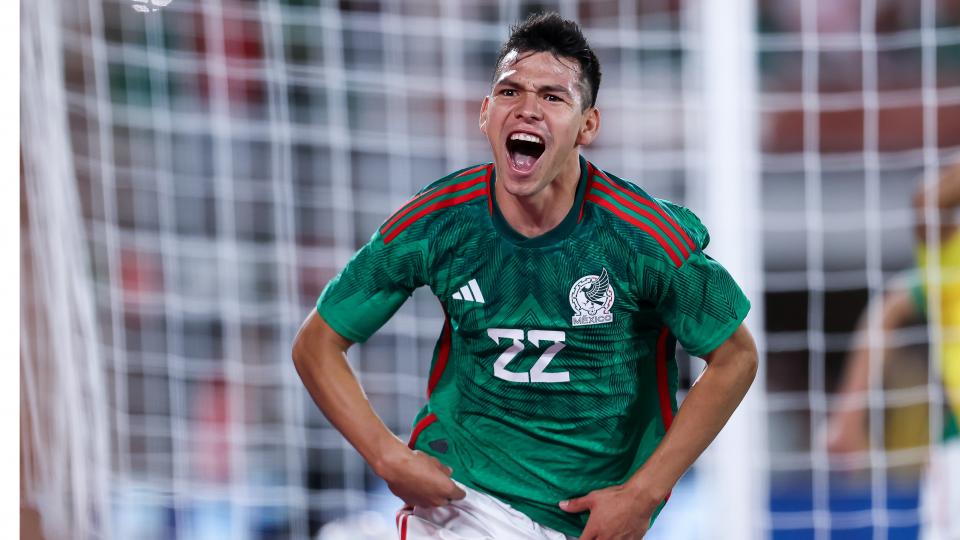

USMNT
Grouped or GLORY: GROUP C
Published
3 years agoon

Argentina | Elo: 2 | FIFA: 3 |
History: With a tie against Ecuador in the last round of 2022 CONMEBOL World Cup Qualifiers, the Argentines were confirmed as invincibles. 2-time champions, 5-time finalists, and beneficiaries of two players often debated as the greatest in the history of the sport, even La Albiceleste tend not to look this good.
Formed at the start of the 20th century, the Argentina men’s national team opened its account with a bang. The first World Cup went mostly the same, but Uruguay would take revenge, coming from behind to deny La Albiceleste an inaugural triumph. Argentina withdrew from the next three tournaments, instead dominating regionally: In the 10 South American championships that took place during this self-imposed exile, Argentina failed to reach the final once.
La Albiceleste returned to the World stage in 1958. They returned to the final 20 years later where they defeated the Dutch to hoist their first Jules Rimet. 8 years on, Maradona would lead Argentina to another triumph in Mexico, scoring 5 and setting up a decisive tally against Germany in the final.
In the 40 years after Maradona’s courtship of the divine, Argentina reached 3 World Cup finals, twice facing the Germans, and lost all of them. Since Messi’s emergence, La Albiceleste has lost 3 continental finals, and the aforementioned decider for the 2014 Copa de Mundial. On the back of the game’s greatest player, Argentina built a decade of heartbreak.
And then they won. And then they did it again.
And so arrive the Argentines, on the crest of a tsunami. Can the champions of South America become the champions of the world?
Expected Finish: 1st
Why?
Argentina are the champions of South America, have a case as the best team in the world, went undefeated against a notoriously difficult set of teams and fixtures, and are about to break the record for most games played without defeat.
They have the best players, are playing at a historically high level, and haven’t failed to advance in 20 years.
Why would you pick against them?
Why not?
La Albiceleste face an injury crisis. That shouldn’t matter for the group stage, but it may prove costly in later rounds.
Key Players
The world’s most popular pick for “greatest of all time”, Lionel Messi is in-form again. The gold-standard of creation, progression, and scoring at his pinnacle, Messil’s impact on Argentina’s ability to win has been massive. Now on the wrong side of 30, La Pulga is not as influential as he once was, but it’s still hard to see Argentina winning everything without some magic from the sport’s preeminent magician.
Lautaro Martinez is making his case as one of the best attackers in the world. Highly prolific for club and country, Martinez’s combination of elite chance creation and goal-scoring has proven quite valuable to La Albiceleste. As the sun sets on Lionel Messi, the 25 year-old from Inter-Milan may prove to be a lynchpin for this team, both in Qatar, and beyond.

Mexico | Elo: 22 | FIFA: 13 |
History: And now we log another entry in the quest for quinto partido. A populous soccer-mad country with a strong domestic league and money to throw around, Mexico should be a powerhouse. Instead, El Tri is merely good.
2-time World Cup quarter-finalists, 13-time World Cup qualifiers, perennial group-stage progressors, and the only team outside of Europe and South America to win a major FIFA tournament, Mexico have a strong case as the best of the rest. Yet, that mantle seems hollow given how far El Tri lag behind the best of the best,
Mexico first graced the world-stage at the inaugural World Cup in 1930. 3 games yielded 3 losses. To reach the 1934 edition, Mexico faced future arch-rivals USA. Mexico lost. After the second World War, Mexico emerged as the power in CONCACAF going perfect in qualifiers to reach the big dance in 1950 and 1954. From 5 more games, El Tri yielded 5 more losses. Mexico finally yielded a point in 1958. In 1962 they went a step further and yielded a win. As hosts in 1970, Mexico yielded progression from the group-stage,
Success at home did not translate abroad with Mexico failing to qualify in 1974 and 1982 and going pointless in 1978. Fortunately, Mexico was, once more, awarded the right to host in 1986. El Tri capitalized, winning their group before notching their first, and only, knockout-stage win.
Unlike 1970, 1986 represented a permanent level-up. Mexico would host and win the confederations cup in 1999, reach the finals as invitees for two Copa Americas, and would consistently qualify for, and advance in, every World Cup where they weren’t banned for cheating.
With that we reach our status quo. Can El Tri buck history, or will they leave the way they’ve always left since 1994.
Expected Finish: 2nd
Why?
History tells us they’ll advance and I don’t see much to suggest Qatar would go differently. Mexico have qualified the way they usually do, have a talent pool similar to what they’ve had before and on par in terms of player quality with Poland while ranking higher on the basis of performance.
You’d be hard-pressed to find something Saudi Arabia compares favorably to Mexico with.
While Mexico hasn’t made the strongest case this cycle, in the absence of compelling counter-evidence, I’m going to bank on history.
Why not?
Mexico hasn’t looked great in recent friendlies, and there is a sense in Mexican fandom that the wheels are falling off. Mexico also technically grades out a bit lower on the talent front than Poland per TMV and WCDCS, and that may undersell the gap given the importance of strikers relative to other positions. Mexico simply has no equivalent for Lewadowski.
Raul Jiminez, formerly the centerpiece for El Tri, has not looked great since coming back from a life-threatening injury.
History is a guide, but it’s not a guarantee.
Key Players
Ajax Starter Edson Alvarez has emerged as Mexico’s best player in a cycle where various key pieces have found themselves in bad form. A strong defender and a capable playmaker, Edson will be critical for a successful campaign.
Hirving Lozano is currently Mexico’s best attacker and a critical piece for a Mexican side that focuses the brunt of their offense down wide. A regular for a Napoli side that is comfortably leading Serie A, Lozano is goal-dangerous, a strong crosser, and a hard-working defender.
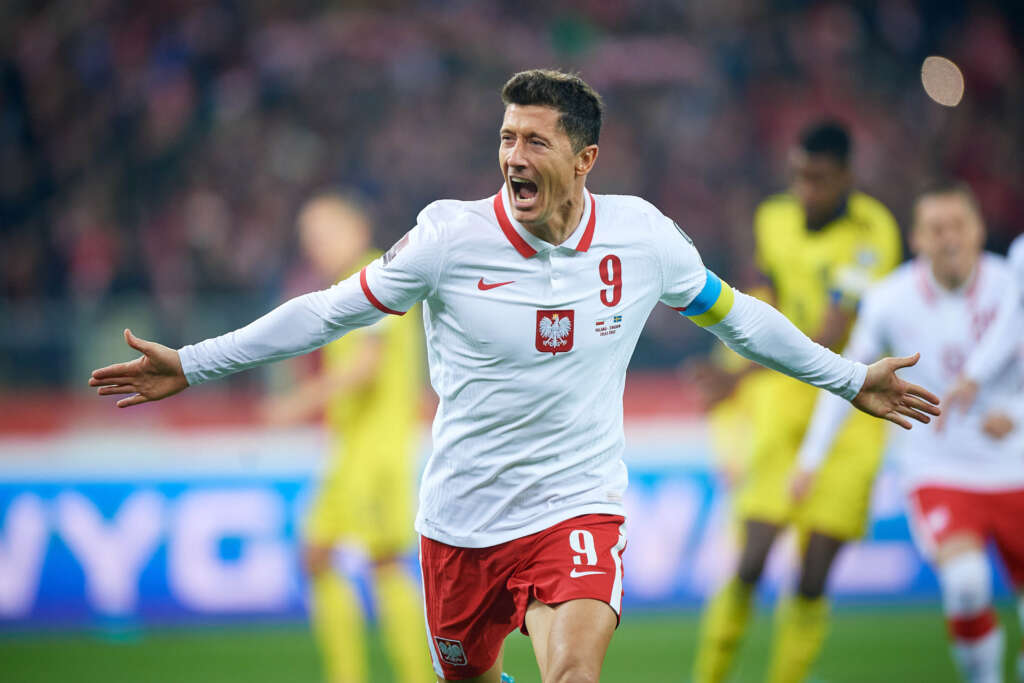
Poland | Elo: 21 | FIFA: 20 |
History: Do not forget Poland. Despite their current reputation as perennial underperformers, Biało-czerwoni were the surprise of the 70’s and 80’s. A shock victory against football’s founders sparked a golden era that many countries could only dream of: Poland qualified for four straight World-Cups, escaped the group-stage at three of them, and became one of fourteen teams to reach two semi-finals via 3rd place finishes in 1974 and 1982.
That success has not been replicated. In the 30 years that followed, Poland have reached only 4 finals, all of which ended with the Poles getting grouped. Biało-czerwoni’s best approximation of success came at the 2016 European Championship with a quarterfinal exit. In two other European campaigns, the Poles were promptly grouped.
2018 was particularly disappointing. With one of the best forwards in the world in the middle of his prime, Poland managed to win enough, and avoid enough friendlies, to be ranked top 8 FIFA, thus entering the World Cup draw in Pot 1. After gaming the system to secure an easier group, Poland were immediately eliminated 2 matches in. Akira Nishino thought so little of the Poles that Japan played a “B-team” in a match where everything was on the line.
Poland will look to do better in Qatar, with a win against Sweden granting them, and Lewandowski, a chance at redemption.
Can Poland conjure the magic of the 74? Will Lewadowski deliver? Or will Poland, once again, disappoint?
Expected Finish: 3rd
Why?
Poland has the misfortune of being grouped with Argentina, possibly the best team in the world, and Mexico, a team who simply do not go out in the group-stage. Even if we ignored that, it’s not clear to me Poland is significantly more talented, or in better form. Lewandowski is a great equalizer, but is he enough?
Poland is the 3rd ranked team in this group by Elo, and FIFA, and has the third best track-record in terms of recent performance.
Maybe Lewandowski upsets the apple-cart, but 3rd place seems right to me.
Why not?
Lewandownski has a case as the best scorer of goals on the planet, Poland do seem to have a marginal talent advantage by my chosen metrics, and that gap is probably undersold when we consider strikers having greater importance relative to other positions.
Poland also swept Wales in the most recent nations league, and Mexico have looked bad in recent friendlies.
Poland breaking through here wouldn’t surprise me.
Key Players
To many, including Messi, a player worthy of the ballon d’or, Robert Lewandowski is maybe the best goal-scorer in the world. With a staggering 76 goals in 134 Poland appearances, the ex-Bayern superstar will be desperate to tally one in the World Cup. If Lewa is on, Poland has every chance to do something special here.
Piotr Zielinski is having a phenomenal 22-23 thus far, with 5 assists and 3 goals in 15 Serie A games to go along with 3 goals and 2 assists in 6 champions league matches. An excellent chance creator who with an eye for goal, Zielinski is key for getting the best of Lewa, and if Lewa should fade, it will probably be up to the Napoli star to pick up the slack.

Saudi Arabia | Elo: 26 | FIFA: 19 |
History: Here fly The Green Falcons. Formed in the 50’s after a match pitting a collection of club players against the Egyptian Ministry of health, the last 40 years have constituted a golden aeon for Saudi Arabia soccer. The falcons have reached 6 of the last 8 World Cups, finished 2nd in the 1992 Confederations cup, and became the first team from the Middle-East to progress past the group phase after shock wins against Morocco and Belgium.
Saudi Arabia got started quickly. Having never participated in a full qualification tournament, the falcons had a proper debut in 1984 where they easily qualified… and then won. And then won again. Saudi Arabia would go on to make 5 consecutive Asian Cup finals, winning three. From obscurity to glory, the debutants had delivered a dynasty.
Having never put together a winning record in qualifying, The Green Falcons went undefeated to reach the 1994 World Cup and went on to reach the next three after that.
The falcons have a knack for surprise. Pegged to finish bottom in 2018, the Saudis recovered from a 5-goal whopping at Russian hands, to play Uruguay close and then upset the Egyptians. By topping a group with Japan and Australia, Saudi Arabia has earned the chance to surprise us once more.
They’ve already been dismissed, obituaries pending. Can the falcons prove us wrong?
Expected Finish: 4th
Why?
Saudi Arabia has not progressed in nearly 30 years having managed only 3 wins in 16 outings. They’re grouped with 2 teams that always make it, and are both the least talented, and lowest ranked side in this group.
While topping a group with Japan and Australia is fairly impressive, Saudi Arabia’s regional success has historically not translated as well abroad in the same way it has for a team like Mexico. This may be a result of how Saudi Arabia plays. The falcons like to possess the ball and build attacks gradually. This may work disproportionately well in Asian qualifying with opponents who are less talented or prefer not to press high. It’s not hard to see this backfiring against their group-mates.
While it’s foolish to count them out entirely, it’s hard to argue they should be favored.
Why not?
History is a guide, not a guarantee. Taken as it is, one could construct the case that what the falcons did in qualifying is more impressive than what we saw from Poland or Mexico.
Additionally, familiarity is usually an advantage. Saudi Arabia’s team all plays in the same league which might offer an advantage in terms of chemistry and cohesion.
They’re underdogs for me, but dismiss The Green Falcons, at your own peril.
Key Players
Capable with the ball at his feet and an excellent positional defender, Mohammed Alburayk is a lynchpin for the falcons. With two AFC Champions League wins, 5 Saudi Professional League wins, 2 top 4 finishes at the Club World Cup, a combined 13 major trophies in 9 years as a pro, and a spot in the IFFHS “AFC Team of the Decade”, Alburayk is a giant in Asian football. With his ability to erase mistakes, and contribute in build up, Mohammed is particularly valuable for a Saudi side that likes to build slowly using positional overloads out wide.
Salem Al-Dawsari is Saudi Arabia’s most important attacker. Both the falcons’ primary creative hub as well as their biggest goal threat, it will probably fall on Salem to conjure up that little bit of offense Saudi Arabia will need to survive.
Predicted Group Standings
|
1 |
Argentina |
|
2 |
Mexico |
|
3 |
Poland |
|
4 |
Saudi Arabia |
For more info on the methodology click here.
Group Previews:
You may like
USMNT
Breaking the Mold: Freese a Unique USMNT Goalkeeper
Published
2 weeks agoon
December 12, 2025
Thomas Deschaine (@uskeeper on X and us_keeper on Instagram)
With only the March window left before Mauricio Pochettino finalizes the 2026 World Cup roster, one major question remains: who can truly be trusted to guard the net? It’s a debate still dividing media, fans, and observers alike.
The USMNT has produced some legendary goalkeepers over the past four decades, but the current pool has yet to see anyone truly seize the No. 1 spot. For a while, it looked like Matt Turner might start in back-to-back World Cups, but after a poor summer performance against Switzerland, he lost his place to Matt Freese. Freese went on to start the last thirteen matches, yet outside of his heroics in the 2025 Gold Cup penalty shootout, echoing Turner’s run in 2023, Freese hasn’t fully convinced me he should be the starter at the 2026 FIFA World Cup.
Since the 1990 cycle, five USMNT goalkeepers, Tony Meola, Kasey Keller, Brad Friedel, Tim Howard, and Matt Turner, have earned the World Cup starting role. Each of them logged minutes in the grueling World Cup qualifying process before taking the job. But Matt Freese could become the first USMNT goalkeeper to start a World Cup without ever playing a single qualifier.
Tony Meola – 1990 Italy World Cup

Creator: Bob Thomas | Credit: Getty Images
Tony Meola remains the youngest goalkeeper ever to start a World Cup for the USMNT. He went on to start in back-to-back tournaments and later served as the backup at the 2002 World Cup alongside Brad Friedel and Kasey Keller.
First Cap (Age) – June 7, 1998 (19 years, 3 month & 17 days)
World Cup 1990 (Age) – (21 years, 3 months, 10 days)
Overall Stats heading into the World Cup
Matches Played – 17
Matches Started – 15
Minutes Played – 1,395
Wins – 7
Shutouts – 6
World Cup Qualifying Stats
Matches Played – 4
Matches Started – 4
Minutes Played – 360
Wins – 2
Shutouts – 4
Kasey Keller – 1998 France World Cup
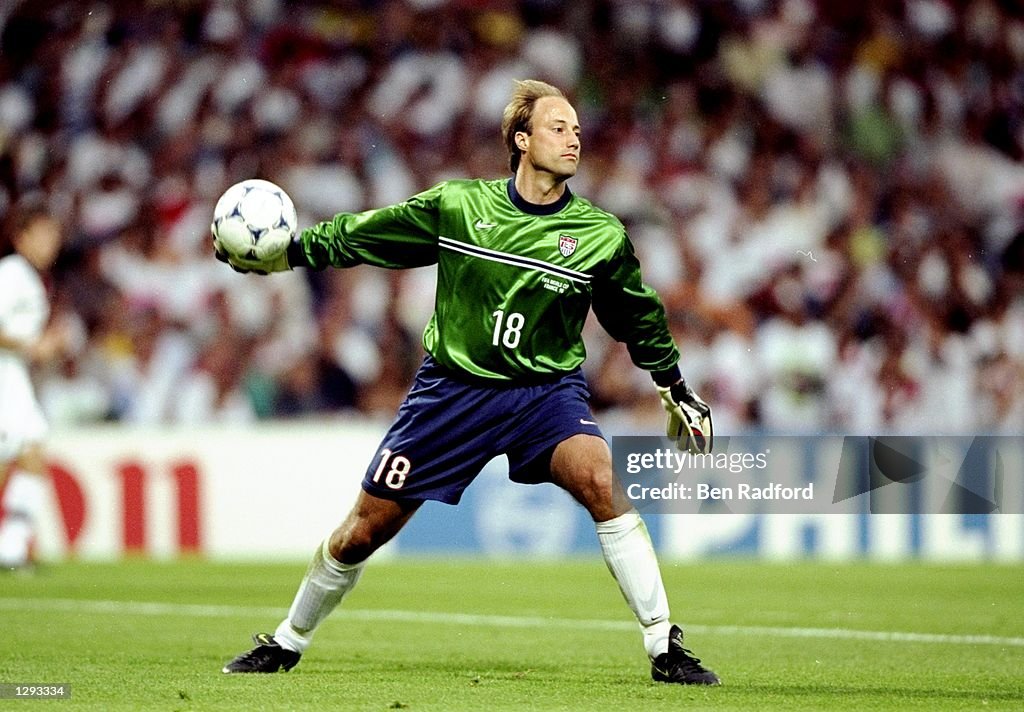
Kasey Keller, one of the backups to Tony Meola at the 1990 World Cup, was left off the 1994 roster but later reestablished himself in the USMNT picture. He went on to become the primary starter for the 1998 and 2006 World Cups and served as the backup on the 2002 team.
Creator: Ben Radford | Credit: Getty Images
First Cap (Age) – February 4, 1990 (20 years, 2 months & 6 days)
World Cup 1998 (Age) – (28 years, 6 months, 15 days)
Overall Stats heading into the World Cup
Matches Played – 34
Matches Started – 33
Minutes Played – 2,790
Wins – 18
Shutouts – 16
World Cup Qualifying Stats
Matches Played – 9
Matches Started – 9
Minutes Played – 810
Wins – 5
Shutouts – 6
Brad Friedel – 2002 Korea/Japan World Cup
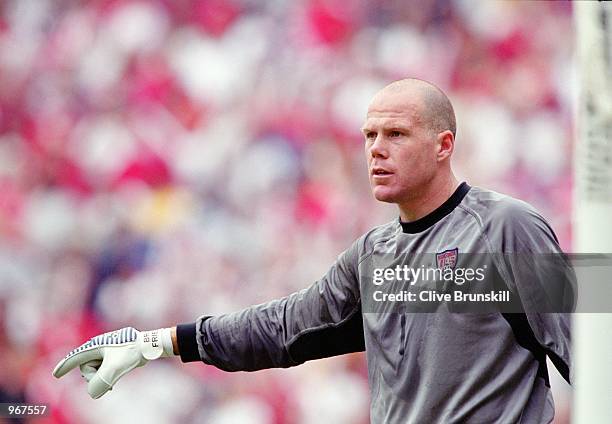
Creator: Clive Brunskill | Credit: Getty Images
Brad Friedel, who started all five U.S. matches at the 2002 World Cup and made one start in 1998, earned a place on three USMNT World Cup squads during his career.
First Cap (Age) – September 3, 1992 (21 years, 3 months, 16 days)
World Cup 2002 (Age) – (31 years, 0 months, 5 days)
Overall Stats heading into the World Cup
Matches Played – 76
Matches Started – 74
Minutes Played – 6,453
Wins – 25
Shutouts – 23
World Cup Qualifying Stats
Matches Played – 13
Matches Started – 13
Minutes Played – 1,125
Wins – 7
Shutouts – 4
Tim Howard – 2010 South Africa

Creator: Ronald Wittek | Credit: Alamy
Tim Howard, the oldest first-time World Cup starter among this group, may also be the most accomplished. He appeared on three World Cup rosters, and likely would have made a fourth had the USMNT qualified in 2018.
First Cap (Age) – March 10, 2002 (23 years, 0 months, 4 days)
World Cup 2010 (Age) – (31 years, 3 months, 12 days)
Overall Stats heading into the World Cup
Matches Played – 51
Matches Started – 50
Minutes Played – 4,185
Wins – 31
Shutouts – 23
World Cup Qualifying Stats
Matches Played – 16
Matches Started – 16
Minutes Played – 1,440
Wins – 12
Shutouts – 8
Matt Turner – 2022 Qatar
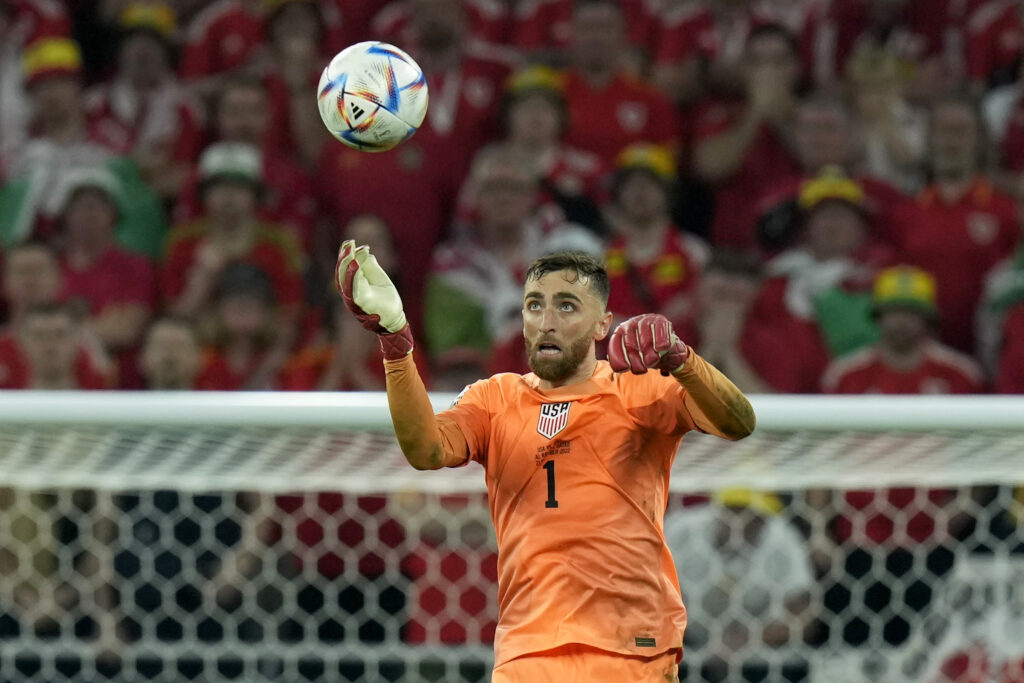
Creator: Francisco Seco | Credit: AP
Turner seized his opportunity when an unwell Zack Steffen was forced off the roster to start the World Cup qualifying, stepping in to start the first of eight World Cup qualifiers. His performances solidified his place as the USMNT’s starting goalkeeper for the 2022 World Cup.
First Cap (Age) – January 31, 2021 (26 years, 9 months, 3 days)
World Cup 2022 (Age) – (28 years, 4 months, 21 days)
Overall Stats heading into the World Cup
Matches Played – 20
Matches Started – 20
Minutes Played – 1,800
Wins – 14
Shutouts – 14
World Cup Qualifying Stats
Matches Played – 8
Matches Started – 8
Minutes Played – 720
Wins – 4
Shutouts – 4
Matt Freese
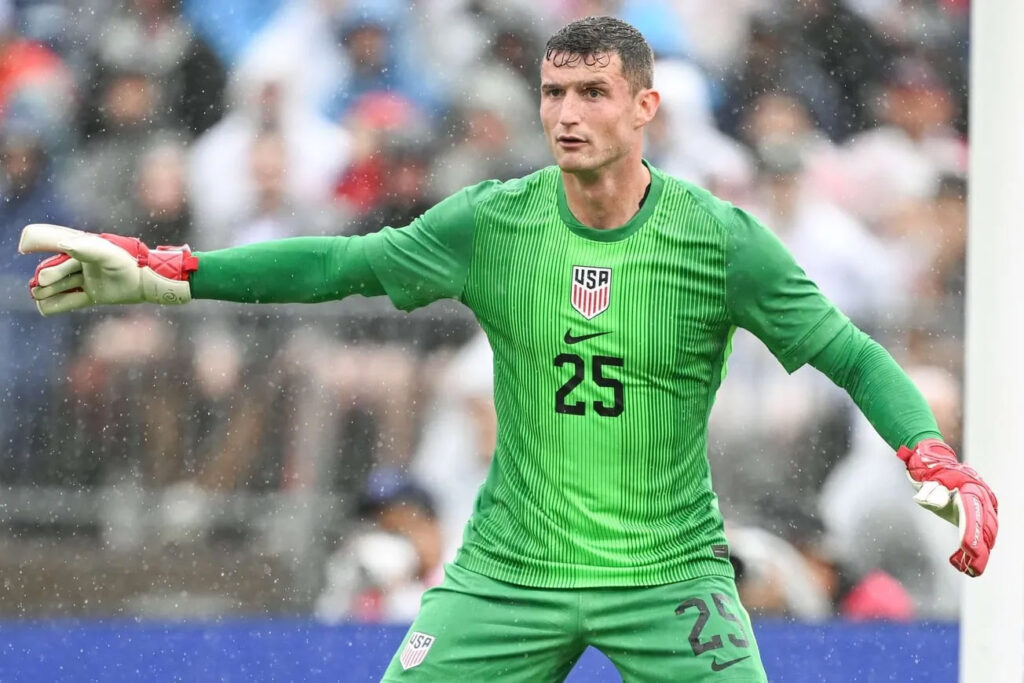
Courtesy USMNT
Matt Freese would have the shortest runway of any USMNT goalkeeper, from earning his first cap to potentially starting at a World Cup. He would also become the first U.S. keeper to start at a World Cup without having played a single World Cup qualifier.
First Cap (Age) – June 5, 2025 (26 years, 9 months, 3 days)
World Cup 2026 (Age) – (27 years, 9 months, 12 days)
Overall Stats heading into the World Cup
Matches Played – 13
Matches Started – 13
Minutes Played – 1,170
Wins – 7*
Shutouts – 3*
World Cup Qualifying Stats
Matches Played – n/a
Matches Started – n/a
Minutes Played – n/a
Wins – n/a
Shutouts – n/a
It’s clear the USMNT doesn’t have a true front-runner in goal even though Mauricio Pochettino currently leans toward Matt Freese, but as we’ve seen, things can change fast. Matt Turner, Patrick Schulte, Chris Brady, Roman Celentano, and Jonathan Klinsmann will all need to push hard to earn their place on the final roster.
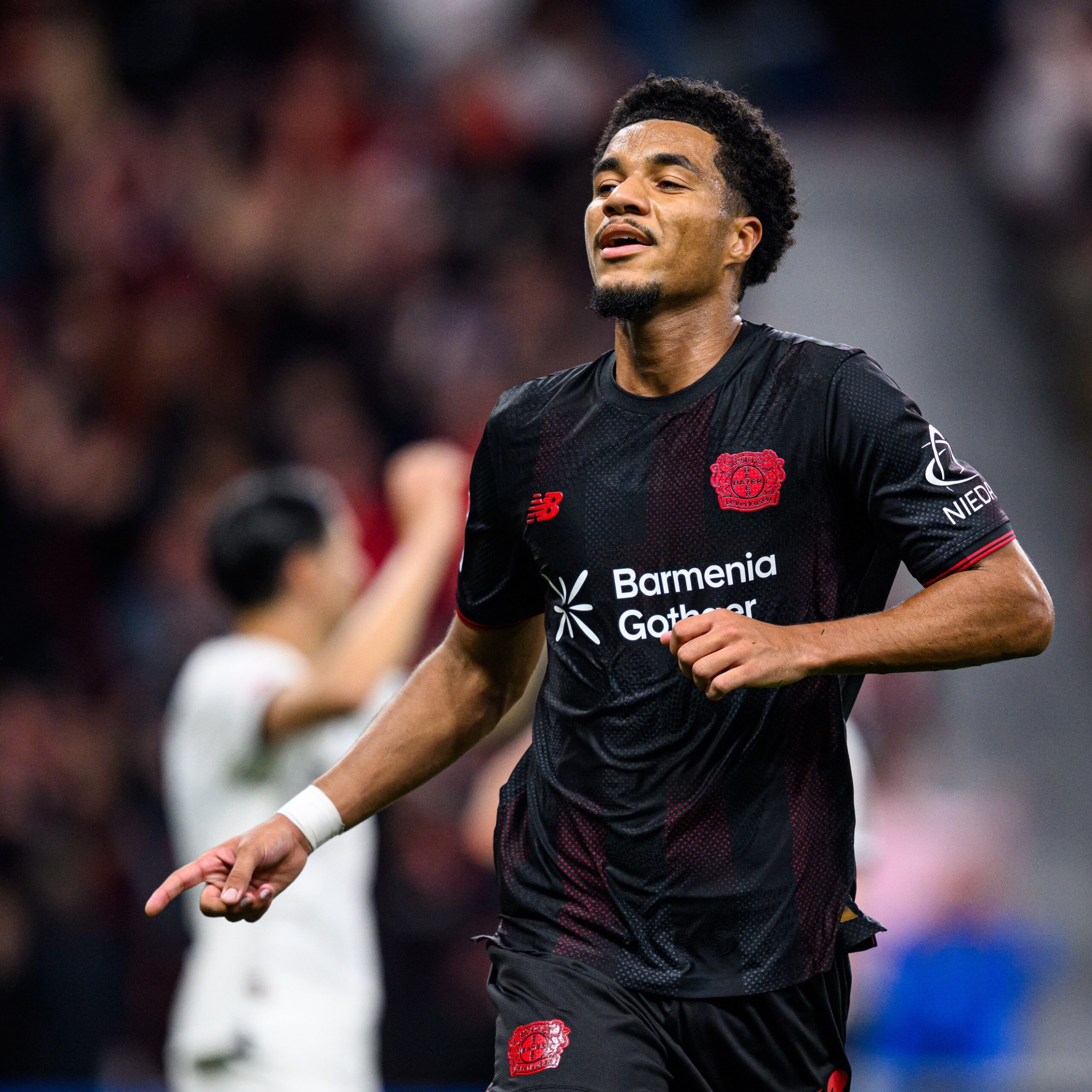
Last year, I wrote a stock-up/stock-down article covering ten Americans who either made a move to Europe or to the U.S. We are closing in on New Year’s and about 6 months until the World Cup (June 11th, 2026), giving us enough data to know if these transfers have been beneficial not just for the players’ club careers, but to make it onto the USMNT for the World Cup. As American soccer players, this season is the most important season of their international career. The players are making one last argument for them to be at a USMNT camp and be part of the team when the United States of America co-hosts the FIFA World Cup. So far, a lot of the European transfers have not gone so well, compared to the domestic transfers.
*All information is up to date as of December 1st, 2025.
Yunus Musah to Atalanta (loan)- Stocks Down

When Massimiliano Allegri took over AC Milan, he cleaned house. Twenty-four players were permanently transferred out of the club or sent on loan (some for positive reasons and others, not so much). Yunus Musah happened to be one of those 24 players. AC Milan sent Musah on loan to fellow Serie A club, Atalanta, with an option to buy that is worth $28 million. As things stand, it does not look like Atalanta will trigger their buy option at the end of the season. Musah has only one start and has appeared in 9 matches (a total of 203 minutes) while being available for a total of 16 matches since joining the Nerazzurri. When it comes to goal contributions, Musah has only one assist coming from the Champions League match against Club Brugge. When it comes to passing, Musah’s accuracy has not been bad (83.5%), but he is lacking in chances created with only 3.
He has never been known for scoring goals, but his total shots this half of the season are as low as 0.6. As for his defensive work, it has been average. He has only 2 interceptions, has lacked successful tackles (25% success rate at 1/4), and he has committed a penalty. The only positive is his ball recovery rate, which is at 16. Statistically, the only areas where he sees positive results have been in his dribbling (60% completion) and duels won (59.5%). From Atalanta’s standpoint, if he is offering little in the final third and in your defensive half, then what is the purpose of starting him? As for the USMNT, his poor form at his club has not gone unnoticed by Mauricio Pochettino. The last time Musah received a call-up to the USMNT was for the Gold Cup, which he turned down and that could be a contributing factor to why he has not been called up since. Others in the midfield, and at right wing, have been able to stake their claim onto the team. At this point, we will not be seeing Yunus Musah make it onto the 26-man team this coming summer.
Johnny Cardoso to Atlético Madrid- Stock Down

One of the biggest transfers this past window for an American, and one of the closest followed transfers in Spain, was Johnny Cardoso’s $35 million (according to Goal) move to Atlético Madrid on a 5-year deal. Johnny was coming off a solid season with Real Betis that showed a promising career in Europe. He collected 4 goals and one assist as a defensive midfielder. In just two months of being at Real Betis, Johnny won the LaLiga U23 Player of the Month for February 2024. Fast forward to today, due to his lack of opportunities with Atleti and his USMNT form, his hopes of being at the World Cup are fading.
During pre-season, he made his way onto the starting XI for Atleti starting in the first three matches of the season. Sadly, he picked up an ankle injury that led him to miss 9 matches. Since returning on September 13th, 2025, Johnny went 5 matches without receiving a single minute. Diego Simeone has opted to go with veteran player, Koke, to start alongside Pablo Barrios and Conor Gallagher as the substitution. He finally got his chance when Simeone named him on the Starting XI in their UCL match against Inter Milan on November 26th, 2025. For someone who had not played a single minute since August, Johnny had a good game in the 59 minutes he received. When we look at the stats from those four matches, there were positives. His pass accuracy sits at 77% with 62% total duels won. Johnny also completed 67% of his dribbles, had 4 interceptions, 2.65 tackles per game, 9 clearances, and 9 balls recovered. Obviously, stats alone will not keep you on the pitch and the performances of the other midfielders as of late have made it difficult for Johnny.
Atleti fans on social media are happy with his performances, believe he should be a starter, and believe he is an important player to the team. Time is running out for him at the international level though with the final USMNT friendly camp coming up in March. He must make an argument for himself to get into that camp to get one last shot at the World Cup. If Johnny builds on his performance from the Inter Milan match, he could see himself in that final camp.
Paxten Aaronson to Colorado Rapids- Club: Stock Down

This will be seen as controversial by many MLS fans, but Paxten receives a stock down mostly because the move has not improved his chances of making it onto the USMNT and the impression that his career has regressed. Eintracht Frankfurt’s sporting director, Timmo Hardung, said, “With a view to the 2026 World Cup, which is taking place in his home country, among others, he made the request to take his next step at the Colorado Rapids.” During the Gold Cup, we saw 16 MLS players take part in the campaign. Paxten only received 58 minutes in total, when you include the friendly against Switzerland. It was the only camp he was called up to in 2025. We saw the likes of Diego Luna, Brian Gutierrez, Jack McGlynn, Luca de la Torre, and Sebastian Berhalter were either getting called up ahead of him and/or receiving more minutes than he was at the Gold Cup.
It set a precedent that no matter how well you perform in a top seven league, like the Eredivisie, the performance of those in the MLS will outweigh yours. In Paxten’s case, he had 8 goals and 4 assists in 30 starts for Utrecht, helping them finish 5th in the top Dutch league. His performance at Utrecht was enough for him to be part of Eintracht Frankfurt’s 2025/2026 campaign, who is competing in the UCL, part as stated by Hardung, Paxten submitted a transfer request to join Colorado Rapids. Yes, Paxten is getting regular minutes at Colorado instead of being a bench player, but he is coming back to MLS after just 2 ½ years in Europe. Despite receiving 571 minutes, Paxten only scored one goal and got 0 assists. It was not enough for Poch to give Paxten another chance with the USMNT, and the transfer had been all for nothing.
Malik Tillman to Bayer Leverkusen- Stock Up
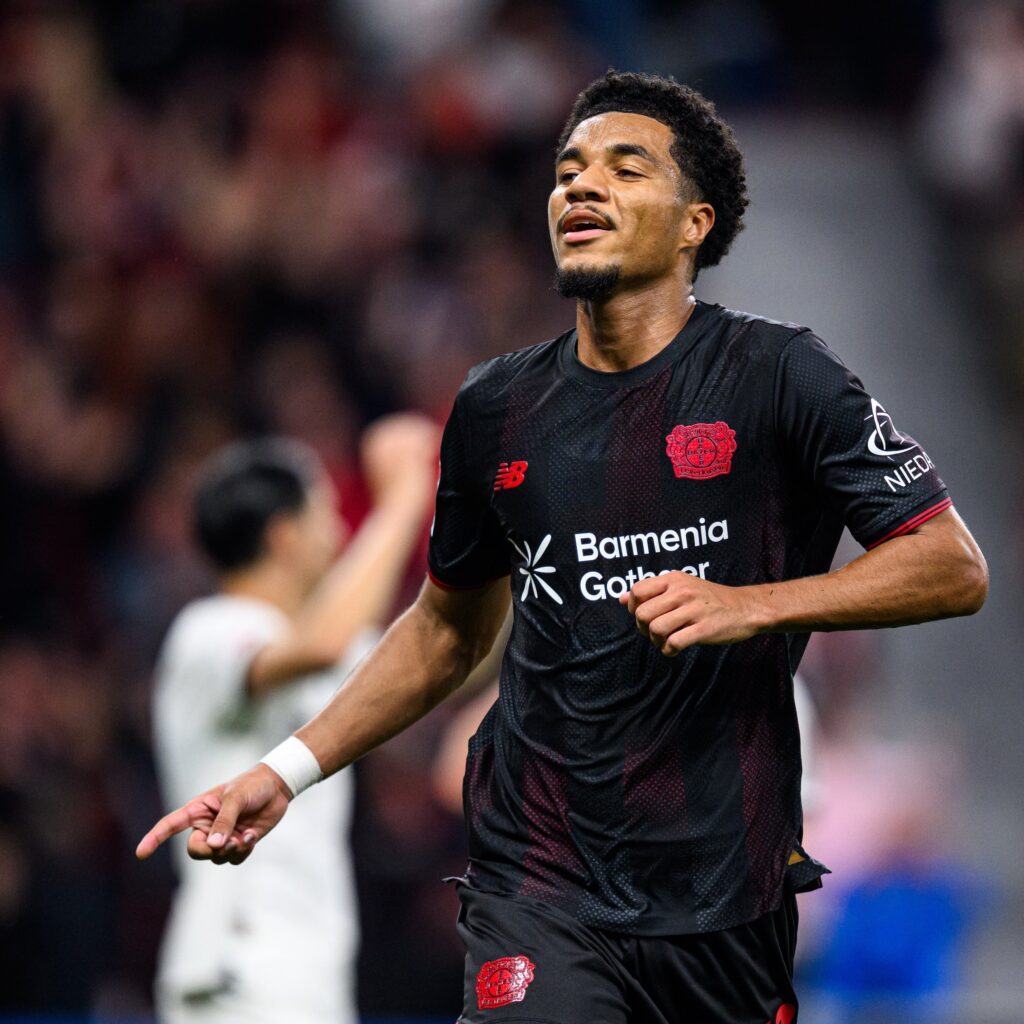
Three seasons ago (the 2022/2023 season), Malik Tillman left the Bundesliga after agreeing to a loan deal to Rangers F.C. from Bayern München. For the following season, Tillman went on loan to PSV Eindhoven, which became a permanent deal. This season, he is back in the Bundesliga, but this time with Bayer Leverkusen. In his debut match for Die Werkself, he scored a goal at the 35-minute mark. It has been a slow start for Tillman in the G/A department with only 3 goals in 12 matches, but there are still many positives to this move that show he can make it in the Bundesliga. When available, Tillman started in 10 matches, 3 of which have been UCL matches, and a total of 815 minutes played. Right now, Tillman has 1.50 xG in the Bundesliga with 187 goals per minute.
He also has a goal conversion of 25% to add on top of that. Outside of scoring, his pass accuracy is at 85%, but he has 0 assists and only 6 chances created. Defensively, Tillman has intercepted the ball 8 times, recovered it 33 times, 3 blocked shots, and has a success rate of 79.9% (18/24) tackles. Additionally, he has won 50% of his duels. A major reason why Tillman gets a stock up is because of one reason, he is playing consistently at a high level. Diego Luna is in the MLS and towards the end struggled with his production (it also did not help when Tillman looked like the better 10 in the Gold Cup).
Paxten would not be a starter for Eintracht Frankfurt if he had stayed and he took a step backwards. Gio Reyna is in the Bundesliga as well and is one of our most talented players, but he only has 189 minutes for Mönchengladbach. Despite Tillman’s continued issue of performing consistently, the fact he is getting regular minutes at a top five league club and finally performing for the USMNT, has locked him in as the #1 CAM for the U.S. at the World Cup.
Damion Downs to Southampton- Stock Down
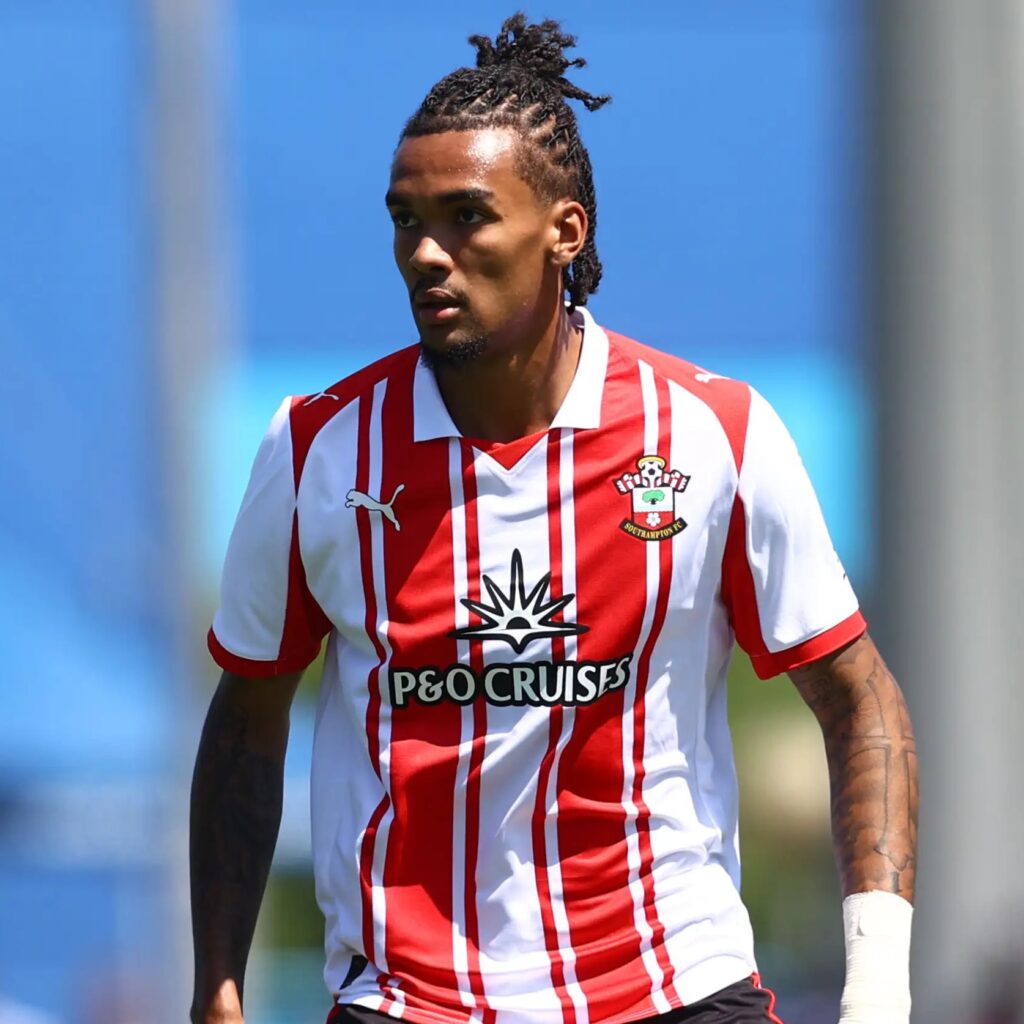
Damion Downs scored 2 goals in 179 minutes just shy of turning 20 years old. He followed this up with 10 goals and 3 assists in his first full season in a professional league when FC Köln was relegated to the 2. Bundesliga. FC Köln won the league and with-it promotion back into the Bundesliga. Downs contribution to the campaign got him a move to English Championship club, Southampton. Anyone who understands English football and Southampton’s striker depth knew this was a risky move. Prior to Downs joining, the club had Cameron Archer, Adam Armstrong, and Ross Stewart. So far, the transfer is going poorly and that is disappointing for a promising player. In 395 minutes, Downs has only one assist and gone 2 matches as an unused substitute. To make matters worse, he has only been on the matchday team sheet 16 times out of the possible 21 matches (Downs missed one match due to illness).
This move was not only important for Downs’ domestic career, but also his international career. During the 2024 Paris Olympics, Downs tried out for the U.S. Olympic team, but Marko Mitrović cut Downs from the team just before the Games. This led him to join Germany’s U20 to take part in their U20 Elite League campaign. It took Pochettino to give him an opportunity at the 2025 Gold Cup for Downs to rejoin the U.S. The goal for Downs would be to take that third striker spot with the USMNT this coming World Cup. Looking at his club form, that will not happen.
If you are looking for any positives, there are two. One, Downs is only 21 years old, so there is still plenty of time to recover his domestic career. Second, Downs is not the only striker at Southampton that has been struggling. Ross Stewart and Cameron Archer only have 2 goals, and one assist each this season. There is still the second half of the season to recover to possibly slide into the 2026 World Cup roster. If not, there is still the 2030 World Cup, which he will be 26 years old.
Patrick Agyemang to Derby County- Stock Down
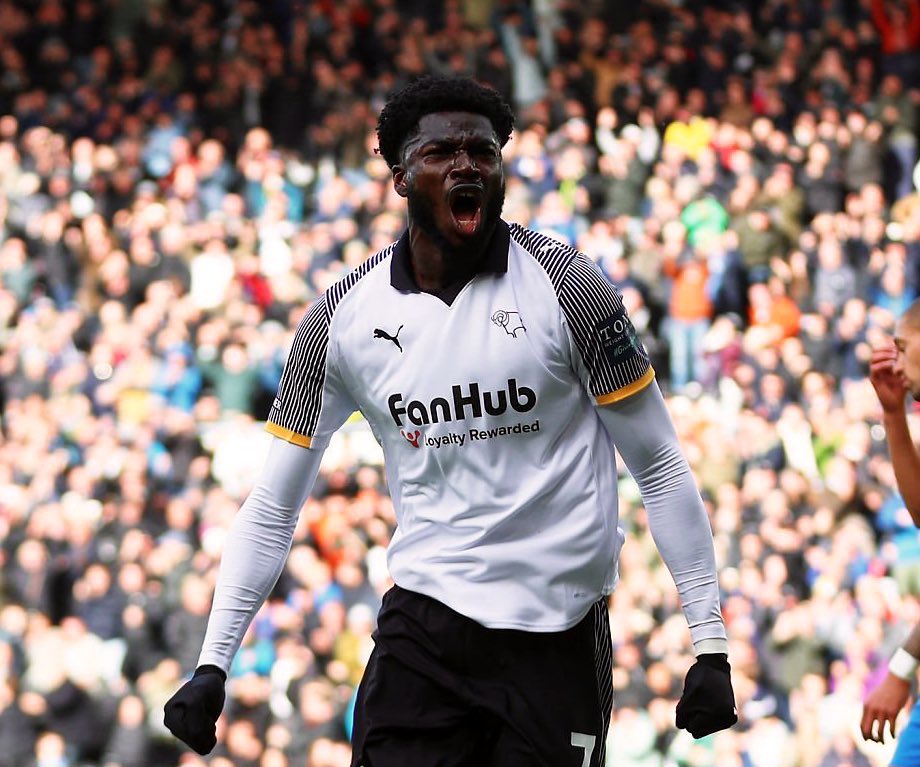
When the Gold Cup campaign began, Patrick Agyemang started all but one match, when you included the two friendly matches. Prior to the Gold Cup, Agyemang was part of ‘Camp Cupcake’ and the Nations League finals in March. In the three camps, he scored five goals. Many fans and pundits were calling him to be a lock for the USMNT and that appeared to be certain after the Gold Cup, but that is where it ended for him. For the September camp, Folarin Balogun, Josh Sargent, and Damion Downs were selected over Agyemang. Hope returned when he was called in for the October camp, but he did not receive a single minute in the two matches.
Then came the November camp where he did not get the call from Pochettino. What could have happened that led him to fall out of favor with Pochettino? There are two reasons: Balogun and Pepi have returned from injury, and Agyemang has been in poor form at Derby County. In 11 starts and 953 minutes played, Agyemang has only 3 goals and 3 assists. In comparison, fellow American and Championship player, Haji Wright has 9 goals and 2 assists in 14 starts. To make matters worse, Agyemang has 318 goals per minute, and his goal conversion is a meager 11%. His passing has not been the greatest sitting at 69% accuracy, but Agyemang is just short of creating a chance per game at 0.9 (13 chances created). Besides having a poor goal conversion rate, his ball retention is also poor. Agyemang has lost 66% of his duels and losses possession 11.2 per game.
Before his move to Derby County, Agyemang scored 8 goals in the current MLS season and finished last season with 10 goals. The move has not only been a stock down for him domestically, but also internationally. Agyemang needs to find his form quickly or he will not be part of the USMNT again this World Cup cycle.
Benjamin Cremaschi to Parma (loan)- Stock Down

Benjamin Cremaschi was someone whose chances of making it to the World Cup were slim, but he took part in ‘Camp Cupcake’ and performed well in the U20 World Cup. Prior to the U20 World Cup, Cremaschi had yet to make his debut since joining Parma on loan at the end of the summer transfer window. After winning the golden boot at the U20 World Cup, Cremaschi got his debut, but he has only clocked in 14 minutes in 2 matches. On seven different occasions, Cremaschi has been an unused substitution by Carlos Cuesta. The loan deal includes a buy-option and so far, it does not look like Parma will exercise that option. Cremaschi needs to find his way on to the pitch to convince Parma to make the move permanent.
The move at first gave some hope that he could get back into the USMNT picture and his showing at the U20 World Cup reinforced that. Since he has not even reached 25 minutes in Serie A with barely any data and footage to go on, his chances at the World Cup are even less now. Cremaschi would have to try again during the 2030 World Cup cycle.
Timothy Weah to Marseille (loan)- Stock Up
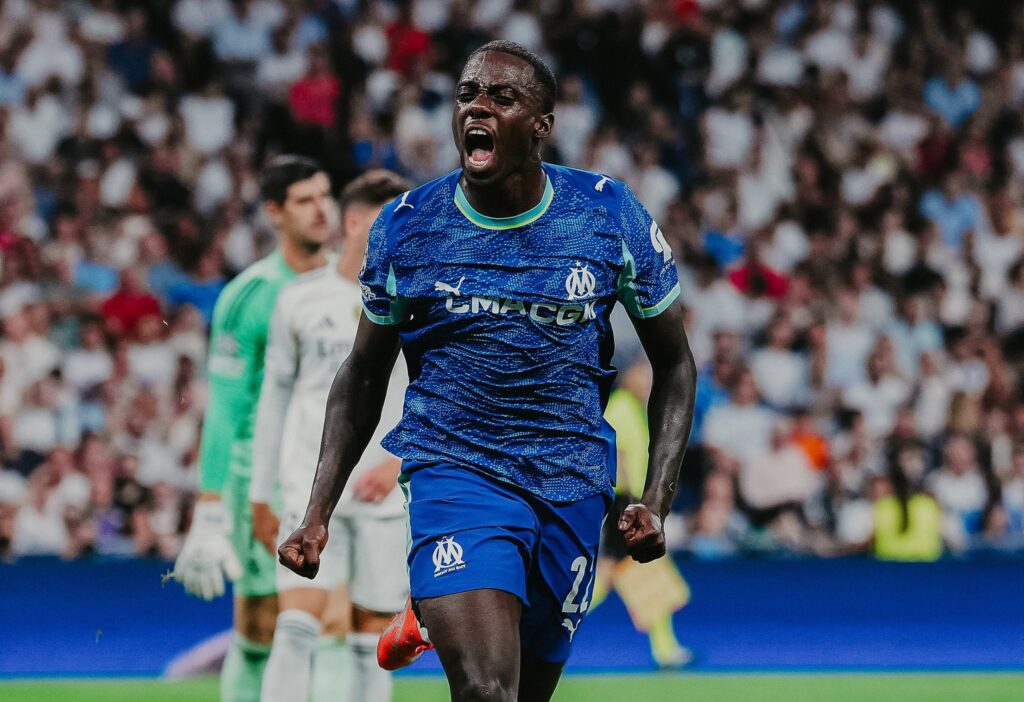
Even though Tim Weah set a personal record for goal contribution with 10 goals and assists, he only started in 24 matches. Now, he is on loan where his dad spent a spell at Marseille. The loan has worked out for Weah so far, starting in 12 of the 15 matches he has appeared in. Currently, Weah has 2 goals and 2 assists with a goal conversion of 23%. His passing accuracy is at 87% with 15 chances created. Weah’s defense has been decent with 59.1% tackles completed, 35 recoveries, and 15 clearances. The one stat that has been negative for him is his duels at 50%, which is not too bad. The move back to Ligue 1 has been beneficial to not just his playing time, but more fitting to his playing style.
Weah is still in the USMNT picture and there should be no doubt that he will be at the World Cup. The question is, at what position? Weah has been playing all along the right side for Marseille, mostly at RB. Now that the USMNT is using a 3-4-2-1, Weah is fighting with Sergiño Dest for that starting RWB spot. If Pochettino does not plan to have Weah at RWB, does he move to CAM, where the depth is deep, or to striker? It is likely that Weah would be placed at RWB, but I do not think it is a matter of being #1 or #2. Depending on who our opponent in the World Cup is would decide if Poch starts Weah or Dest.
Kristoffer Lund to 1. FC Köln (loan)- Stock Up
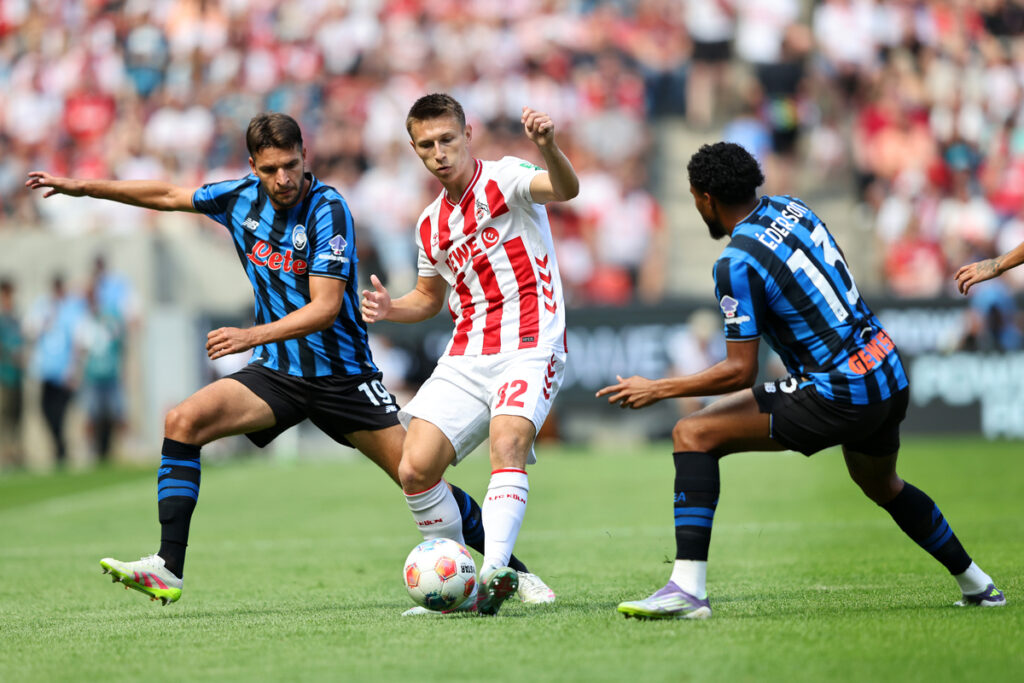
A surprise transfer over the summer came from Kris Lund when he joined FC Köln in the Bundesliga on loan. Lund started off strong when he joined Palermo in Serie B back in 2023/2024, but last season he struggled with his form and getting starts (he only started 24 of the 35 matches he appeared in). That is why when the report broke out that newly promoted Bundesliga club, FC Köln, signed him on loan with a buy-option, it took U.S. fans by surprise. It has been up and down for Lund since joining Köln, but the club is midtable and will likely avoid relegation. Lund has also been starting consistently for Die Geißböcke with 10 starts out of 14 matches. Due to him getting consistent starts for a midtable Bundesliga club, many USMNT fans have suggested that Pochettino should give Lund another chance.
That has not happened, either because there is something about his club performance that has not impressed Poch to call him up over John Tolkin and Max Arfsten, or Lund’s performance back in the October 2024 camp that left a bad impression. Looking at his stats, Lund has not really done anything offensively and that could be a reason why he has not gotten another look by Poch. His xG is at a low of .20 while his xA sits at .41. Lund did get his first Bundesliga assist recently in Köln’s match against Werder Bremen. Lund’s passing has not been too bad with an accuracy of 72.5%, but his chances created are only at 6. Defensively, he is doing better where he has 10 interceptions, 95.8% (9/12) completed tackles, 31 recoveries, and 36 clearances. A major negative in his records is that he has committed two penalties.
The loan has been good for his domestic career and caught the attention of USMNT fans again. If we are giving a midtable 2. Bundesliga player call-ups, then a midtable Bundesliga player should get another opportunity. It is doubtful that Lund will be at the March camp and at the World Cup. The LWB position will likely be covered by Antonee Robinson and Arfsten, one who has been reliable for us since the 2022 cycle and the other who has a 6 G/A this year. He is 23 years old, so there is always the 2030 World Cup. Lund simply needs to end the season on a positive note, make his move to Köln permanent, and then perform consistently throughout the next cycle.
Honorable Mention
George Campbell to West Brom Albion- Stock Up

Another surprise transfer was when George Campbell left Montréal for English Championship side, West Brom. So far, it has not gone too badly for him. While healthy, he has started in 13 matches with a total of 1,259 minutes. Campbell has collected 2 clean sheets with 9 interceptions, 81.94% (21/30) successful tackles, 47 recoveries, 73 clearances, and 8 blocked shots. The only major negative defensive stat Campbell has is committing one error that led to a shot. He has been successful with his passes by completing 89% of them, but Campbell’s duels have been average, winning 50% of all duels.
Like Lund, Campbell recently got his first English Championship assist in West Brom’s clash against Swansea off the bench. Due to the USMNT’s current lack of quality CBs, there were fans suggesting that Pochettino call up Campbell to give him a shot. The thing is though, Campbell has mostly played at RB, a position that is covered by Sergiño Dest, Alex Freeman, and Joe Scally. On the upside, Poch has moved to a back 3, which could give Campbell access to the USMNT. It is doubtful that he will get a chance at the March camp, but he is only 24 years old, and he is now in Europe where he can continue to develop. The 2030 World Cup is still a reality and that is why he gets a stock up.

USL made national headlines when they announced on February 13th, 2025, their plans to launch a Division One league, followed by the announcement of promotion/relegation on March 19th for the new Division One league, the Championship, and League One. If sanctioned by US Soccer, USL Division One would be of equal status to MLS and compete for the best major soccer league in the U.S. The implementation of promotion/relegation in the USL would become the first in the U.S. and test the question asked for many years, “would pro/rel work in the U.S.” USL HQ informed the public that they planned to have the inaugural season of Division One during the 2027-2028 season with promotion/relegation beginning in 2028.
Until November 3rd, with the announcement of Tony Scholes being hired as the President of the Division One, only three teams have applied for membership to the inaugural season of Division one: Louisville City, North Carolina FC (who announced at the time of the Scholes news that they would fold until the launch of Division One), and Pittsburgh Riverhounds. There has been a rapid expansion of teams in the already existing leagues since the two announcements. Teams joining League One are: Fort Lauderdale FC (2026 debut), New York Cosmos (2026 debut), Port St. Lucie SC (2027 debut), Sporting Cascades FC (2026 debut), and Rodeo FC (2027 debut). Fort Wayne FC and Sarasota Paradise would also be joining League One from League Two (2026 for both teams). For the Championship, Reno, NV will once again have a team planned for a 2027 debut. Along with those teams, USL is actively working to expand to other markets. The markets and partners they are looking at are Brevard County, FL (Space Coast Pro Soccer), Riverside, CA (Riverside Pro Soccer), Brownsville, TX (City of Brownsville), Winter Garden, FL (Central FL Pro Soccer), Santa Rosa, CA (City of Santa Rosa), and Pensacola, FL (City of Pensacola).
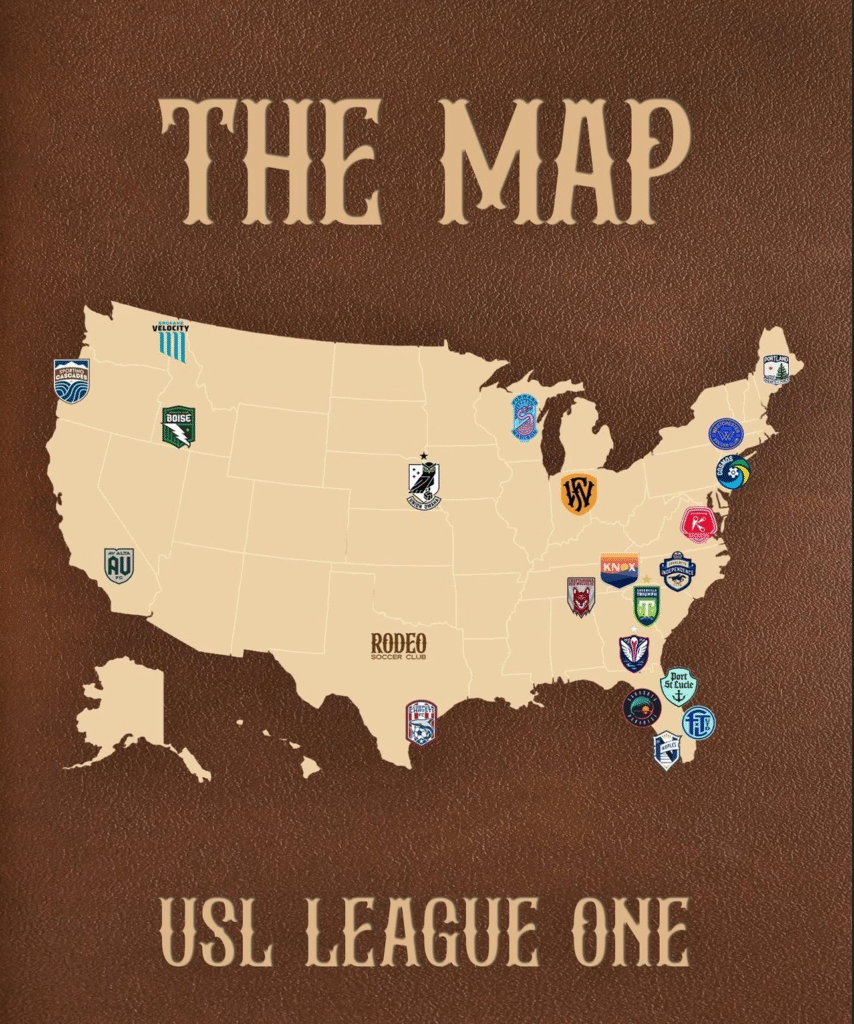
Along with these recently announced teams and partnerships, USL has teams joining the organization just in time for promotion/relegation that were announced prior to the February and March news. Starting with League One, these teams include: Corpus Christi FC (2026 debut) and Athletic Club Boise (2026 debut). As for the Championship, they will be adding Brooklyn FC (2026 debut), Sporting Jax (2026 debut), Atlético Dallas (2027 debut), Milwaukee Pro Soccer (TBD), USL Pro Iowa (TBD), Buffalo Pro Soccer (TBD), and Ozark United FC (2027 debut), while Santa Barbara Sky FC (2027 debut) would replace Memphis 901 FC.
Other than that, news on the Division One and promotion/relegation had been quiet until USL snatched Tony Scholes from the English Premier League. Tony Scholes will be the President of Division and help with the implementation of promotion/relegation. Scholes served as the chief football officer of the EPL and will join USL at the end of the EPL season. As of November 15, 2025, USL Division One has not been sanctioned as a division one league by US Soccer. The hiring of Scholes indicates that they are confident this new league will get approved or they have already been told it will, behind closed doors. The fact that we have not heard news on what the promotion/relegation format would be, and Scholes task would be to help implement it could mean that USL has not come to a decision on one. Since we do not have any ideas on what the format could be, I want to provide a possible option that they could go with.

One of the biggest questions people have had since the USL announced promotion/relegation was how they would tie it to the playoffs. There is an option they could do, but it would result in only having one playoff. USL would have a playoff for Division One, but they would eliminate the concept for the Championship and League One. It might not be the most popular idea here in the U.S., but the main goal for the lower leagues is to get promoted, not to win a trophy. They would retain the league title for those two leagues with the winner being the team with the most points at the end of the season, just like how it is in the European leagues. The purpose is to create fairness for the top performing team(s) in the two lower leagues and reduce confusion. If there is a need for a playoff format, they could adopt the format the Bundesliga uses where the 16th best team in the first division and the 3rd best in the second division face-off in a two-leg match to see who would be in the first division the following season. The other option is the Championship concept, where the teams who finished 3rd through 6th in the table compete in a promotion playoff. The semi-finals are two-leg matches while the final is a single-leg match. The winner is promoted to the EPL. The execution of promotion/relegation must be done perfectly to retain fans, gain fans, prevent confusion, and be entertaining.
USL already has a division one league with their women’s Super League, who is competing against the NWSL. Currently, the S League has only nine teams (Brooklyn FC, Carolina Ascent FC, Dallas Trinity FC, DC Power FC, Ft. Lauderdale United FC, Lexington FC, Spokane Zephyr FC, Sporting Jax, and Tampa Bay Sun FC) to the NSWL’s 14 teams (3 teams in the works). The Super League will be adding an additional nine teams (Athletic Club Boise, New York Cosmos, Ozark United FC, Buffalo Pro Soccer, Chattanooga Red Wolves FC, Forward Madison FC, Indy Eleven, Oakland Soul SC, and USL Palm Beach) with all but three to have their inaugural season to be determined. What makes the S League unique from the rest of the soccer leagues in the U.S. is that they use a fall-summer schedule. Competing against a top five women’s league in the world is a tall ask, but it shows the ambitions of USL.
They are also willing to take risks by voting to pass promotion/relegation for the men’s league and have a fall-summer schedule for the S League. If the S League schedule format proves successful, it stands to reason that they would move the men’s leagues to the same schedule. It would also avoid the organization from having to fight MLS for viewership when the leagues are in play, especially when they launch a direct rival and are at their most ambitious point in their history. The same can be done for the S League if promotion/relegation is successful for the men. USL can start establishing lower women’s leagues and introduce promotion/relegation to the women’s game here in the U.S.
Many would say USL still stands no chance at competing against MLS, even with promotion/relegation and having a division one league. That is the case when you look at the quality of the players is finance, but that is the reason why the USL made these decisions based on the reports prior to the announcements and afterwards. Promotion/relegation and the introduction of a division one league could see an increase in investors. We are already seeing that with the likes of Gio Reyna joining Fort Lauderdale as an investor, BellTower Partners investing into USL, Sofia Huerta and Kasey Keller joining the Athletic Club Boise ownership group, and the Chickasaw Nation becoming an investor of the OKC for Soccer just this year alone. Then there is the expansion fee for MLS, MLS Next Pro, and the USL leagues. MLS charges an astounding $500 million! Yes, the money is used to construct a proper stadium, acquire players, etc., but at this point it will discourage many from purchasing a franchise license. MLS currently only has two leagues and one of them is advertised as a development league to prepare for MLS. The expansion fee for an independent team to join MLS Next Pro is unknown, but Sports Business Journal reported in 2024 that it is significantly cheaper than the USL Championship. The fee to join the USL Championship is $20 million while League One is only $5 million. These two fees are significantly lower than MLS and that will be more appealing to potential owners, but unlike the MLS fee, it is not enough for a stadium, training grounds, and players. As for what the fee is to join USL Division One, that is unknown at the moment.
I highly recommend reading the ESPN article by Jeff Carlisle titled “Will USL’s Move to Pro-Rel Change U.S. Soccer, Threaten MLS?” In there, Carlisle discusses the reasons behind the decision and that it is mostly financial. For example, a USL spokesperson said they expect to see an increase in commercial revenue by 15% to 30% due to promotion/relegation. Also, the former owner of San Diego Loyal lost $40 million in 4 seasons. As for the reaction from MLS, we have not heard one yet. The only possible reaction we have seen from them is what the former MLS Next Pro president, Charles Altchek, told to Backheeled back on March 6th, 2025. In the interview, he told them they aim to have 40 to 50 teams and a possible second league with one of the MLS Next Pro leagues being a second division, putting it in direct competition with USL Championship. The biggest question is, whichever league that is, can compete for fans? Due to the Apple TV deal, we currently do not have the ratings of MLS Next Pro. The closest idea we have is the attendance, which is 5,580 for USL Championship per match to MLS Next Pro’s 3,361, according to Transfermarkt. Unlike the attendance, the viewership for USLC is much higher where the season premiere match had 453,000 viewers. MLS Next Pro’s massive expansion plan announcement date was either a coincidence, or MLS got word USL’s promotion/relegation implementation with the division one news, and this was their response. I will let you come to your own decision.
It seems, as of right now, it appears MLS will sit back and wait to see how the USL’s Division One and promotion/relegation will play. Division One and promotion/relegation will either be successful for USL and lead them to the financial success they are hoping for or lead to the possible collapse of USL. American sports fans are not the only ones keeping their eyes on USL now, but the rest of the soccer world is after their two massive news. The coming years are going to be exciting times for American soccer!
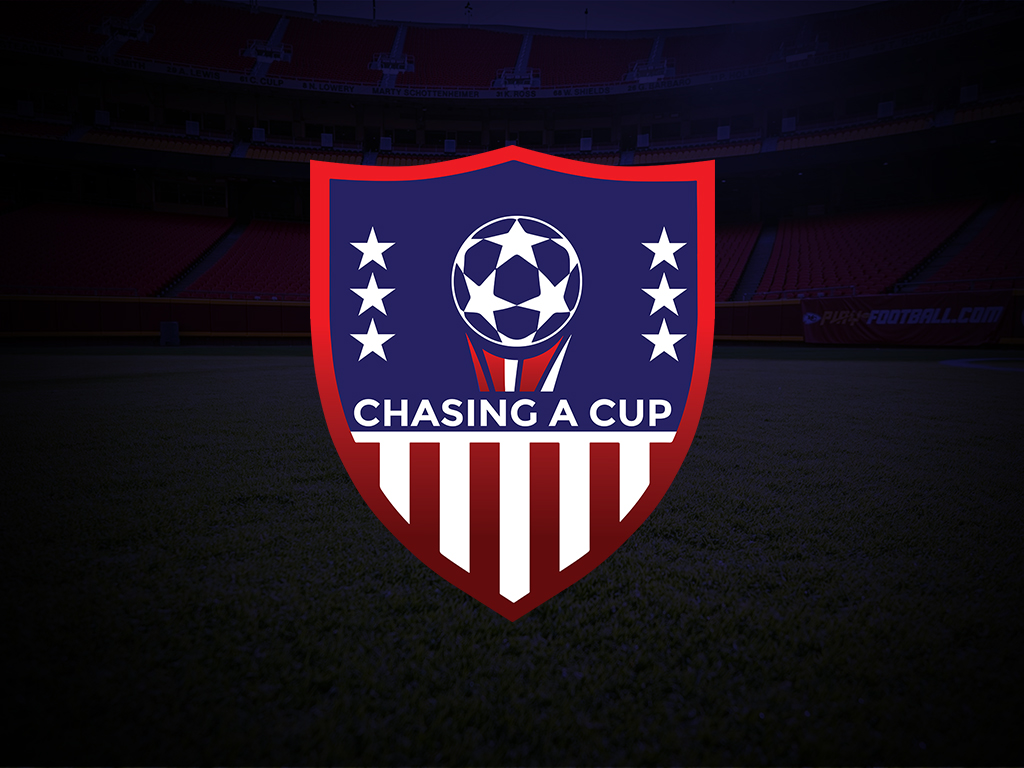

Breaking the Mold: Freese a Unique USMNT Goalkeeper

2025 Summer Transfer Window Review

USL’s American Soccer Dream

Trending
-

 Club News1 year ago
Club News1 year agoAmerican Transfers: Stock Up & Stock Down
-

 USMNT2 years ago
USMNT2 years agoUSMNT Kits Come in Different Styles and Colors
-

 Club News6 years ago
Club News6 years agoJulian Vincente Araujo
-
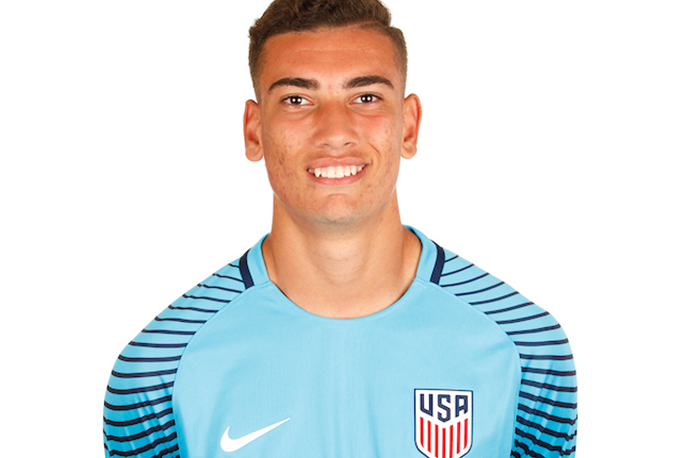
 Club News5 years ago
Club News5 years agoCJ dos Santos, Benfica
-

 USMNT5 years ago
USMNT5 years agoA Hidden Gem: Barça Residency Academy
-
USMNT3 years ago
World Cup Format History
-

 USMNT2 years ago
USMNT2 years agoIs the MLS Specifically Targeting Expansion to USL Cities?
-
USMNT6 years ago
MLS Quota


